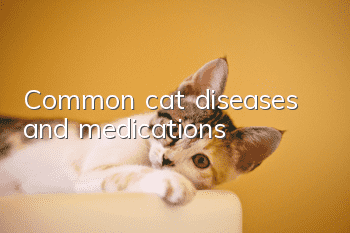Early symptoms of abdominal transmission in cats and methods of prevention and treatment

What are the early symptoms of feline abdominal transmission? Anyone with experience in raising cats should know that cat distemper, cat influenza, cat rhinorrhea, and cat-borne infection are the four most common diseases in pet cats. Among the four major cat diseases, feline epigenetic transmission is the most troublesome, with a mortality rate as high as 95%. The 95% mortality rate from cat-to-carcinoma transmission is almost equivalent to a death sentence for the sick cat. So what kind of disease is this heinous cat-borne disease? How to prevent and treat abdominal transmission in cats? What are the early symptoms of abdominal transmission in cats? The editor will answer them for you below.
What is cat transmission?
It is well known that cat-borne infection is a feline infectious disease with a high mortality rate. Cat-borne disease, also known as feline peritonitis, is a chronic and fatal feline infectious disease caused by a feline coronavirus. The scary thing about cat-borne disease is that it is It has a high mortality rate and can also spread between cats of different ages.
Of course, old cats and young cats with low resistance will have a higher prevalence of the disease, and purebred cats will also be more susceptible to feline transmission than ordinary domestic cats without breeds.
How is cat-to-feline transmission transmitted?
Feline-borne infection is usually transmitted through the mouth and nose. For example: cats carrying feline coronavirus can infect cats living together through their feces; a small number of cats can become infected through virus-contaminated clothes, cat food bowls, people or insects.
Because the symptoms of feline abdominal transmission are not particularly obvious, and there may be other bacterial infections at the same time, it is not easy to diagnose. The early symptoms of feline abdominal transmission are mainly: continuous fever, difficulty breathing, loss of appetite for meals, poor energy, enlarged abdomen, and weight loss.
The symptoms of late stage feline transmission of abdominal transmission are mainly divided into dry type late stage feline transmission and wet type late stage feline transmission.
The main manifestations of cat abdominal transmission in the late stage of wet type are: the abdomen becomes enlarged due to a large amount of fluid in the pleural and abdominal cavity, and male cats may have scrotal swelling. Breathing is more difficult, and loss of appetite leads to malnutrition, anemia, and weight loss in the back and spine.
The main manifestations of abdominal transmission in cats with late dry type are: mild fever, body weight loss, cloudy eyes, and visual impairment. Some sick cats will also experience post-paralytic spasm and granulomas in the abdominal cavity (requires professional examination by a professional doctor) . Note that the dry type of cat abdominal distension does not show abdominal swelling caused by ascites, but it is more difficult to treat than the wet type. If you find that your cat has a problem, send it to the pet hospital for relevant examination and timely treatment.
How to prevent fetal transmission from cats?
It is a pity to say that no relevant preventive vaccine has yet been developed for feline infectious diseases with high mortality caused by abdominal transmission. However, the feline coronavirus that causes abdominal transmission is relatively fragile when outside the cat's body, so it must be strictly disinfected. Can eliminate viruses in the environment.
Poop scavengers must be more diligent and provide their pets with a clean and hygienic environment. This can not only prevent feline infectious diseases such as abdominal transmission, but also prevent diseases caused by other bacterial viruses. Give cats some nutritious food and appropriate Exercising to increase immunity can also prevent feline transmission.
Healthy feline health requires scientific control. The editor of Maomao.com asked the pet doctor for advice. In order to avoid cat-to-cat transmission, everyone should try not to frighten the cat and go out less.
How to treat abdominal transmission in cats?
It is generally recommended to undergo strict scientific treatment by a veterinarian in a regular pet hospital for the treatment of abdominal transmission in cats, and do not seek medical treatment on your own.
The doctor is likely to use antiviral drugs, antibiotics, etc. to suppress the virus in cats. Cardiotonic rehydration increases the cat’s resistance.
If a cat has excessive ascites, the hospital is likely to puncture the cat’s abdomen and drain the fluid, which requires professional environmental equipment for treatment.
Summary: Cat-infection is a feline infectious disease with a high mortality rate, so if your cat shows signs of illness, please take the cat to the pet hospital for rigorous treatment in time. Do not ignore it or treat it on your own. A clean environment and good habits will help your cat avoid cat-to-cat transmission. There are cases where cats can recover from the disease, so even if you get sick, don’t give up and face it together. The editor believes that the shit collector and the cat will definitely defeat the disease
- Why does the kitten vomit milk?
- How to brush your cat’s teeth to prevent dental disease?
- Let you know the diagnosis and treatment of ringworm in pet cats!
- What are the causes of pet death? Obesity ranks first!
- Symptoms and solutions to depression in cats
- Male cat has brown discharge from urethra
- Why do cats hiccup?
- Why do Oriental shorthair cats need to be neutered?
- How to deal with cat bath stress reaction?
- Early symptoms of ringworm in cats



